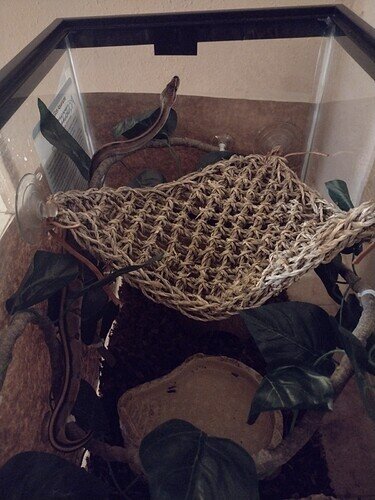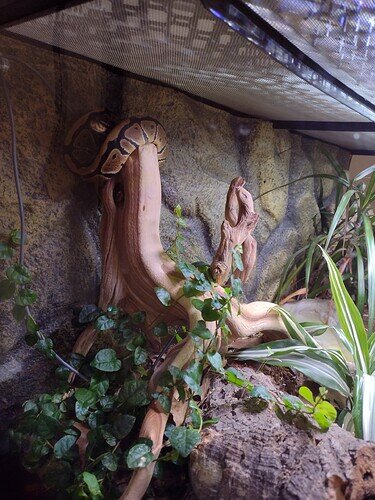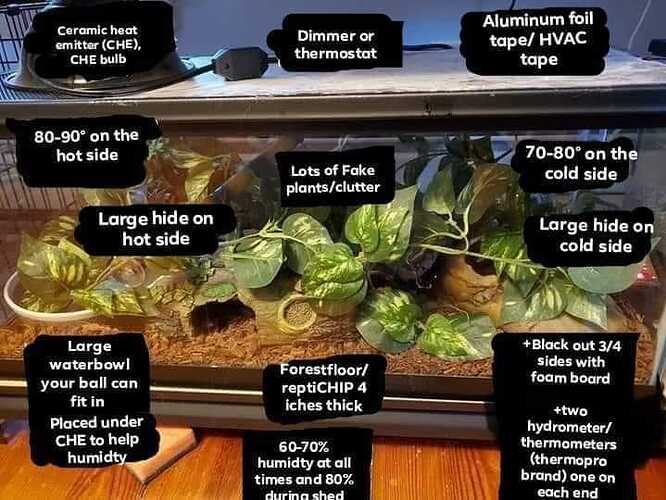I am going to buck convention here, but with a very large caveat.
If you know what you are doing, you can raise a ball from hatchling to adult in a 55g with little issue
I am going to repeat the important part: IF YOU KNOW WHAT YOU ARE DOING
I have done this on more than a few occasions. Granted, I have been keeping for decades and throw myself hard into setting things up properly
For a 55g, you will need a media that retains a decent amount of moisture without being constantly soggy or compacted. There are lots of ways you can accomplish this, one that has worked for me has been a media composed of cypress mulch, leaf litter, and long fibre sphagnum
Humidity can be an issue, depending on where you live. The media in the cage can help with this, hence the mix I suggested above. Adding things like live plants helps as well. And, of course, well placed and chosen hides. In/under the humid hides I would go with just sphagnum moss. You do not need to cover 90% of the top, the most I have covered over was 25%. If you are using a mister then you should be fine without any covering. I would not run it constantly, just pulses in the evening after lights out and morning before lights on
Heating will be the trickiest thing to maintain. I strongly recommend going to one of the big box hardware stores and buying a panel of the 2cm foam board and cutting that to sizes that will fit the back and sides. This will help retain a decent amount of heat. You will need to provide some type of extra heat. The easiest way to do this is with an under-tank heat mat that you must have hooked up to a thermostat. If you do not have it hooked to a thermostat it will over heat, the glass will shatter and it will be a major issue. Period. End of discussion. Something I like to do, that is a bit more complicated, is to take the under tank heat pad and put it between two pieces of light diffuser grid and slide the whole under the tank. You can easily position the probe for the thermostat proximal to the mat without being directly on the mat and it also allows an air gap between the tank bottom and the floor/base/stand underneath the tank. The media over the heat pad will need to be shallower so that sufficient heat penetrates to warm the animal but should also prevent the animal from burrowing all the way down to the glass and burning themselves. Black box makes a subterranean hide that would work great for this (and also for the humid hides) because you can bury it down into the media and get the “basking area” closer to the heat source and also capture some of the heat within the hide
Your major challenge will be escape. You will need seriously structurally sound and latching tops. Textbooks/bricks/rocks/your full laundry basket/etc., will NOT work to keep a determined ball in their cage
I would get everything set up and begin monitoring it before just throwing the animal in. Buy an infrared temp gun for temperature monitoring, those silly dial things from PetsMart/Co are damn. Once you have everything dialed in and stable then you can add the animal and leave it be for a while to settle in before you try feeding



